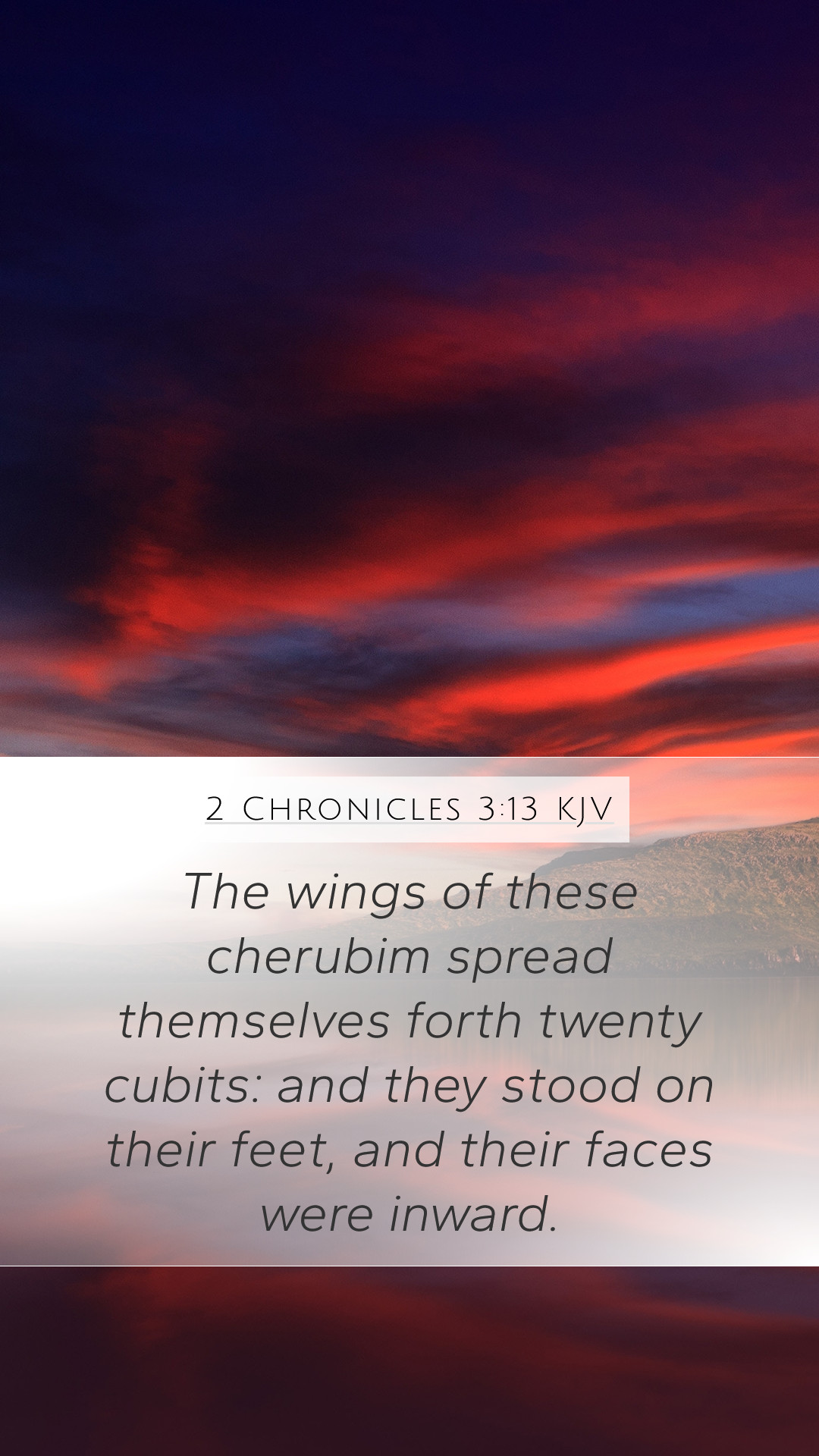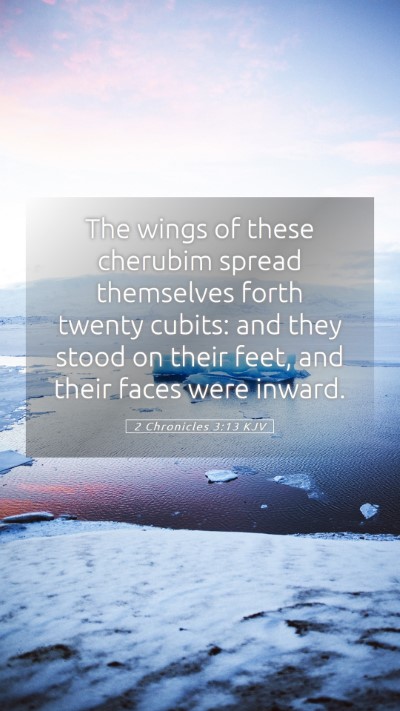Bible Verse Explanation: 2 Chronicles 3:13
In 2 Chronicles 3:13, we find a significant passage that describes the construction of the temple by Solomon, specifically the dimensions and structure of the cherubim placed within the temple. This verse reads:
"And the wings of the cherubim were twenty cubits long: one wing of the one cherub was five cubits, reaching to the wall of the house: and the other wing was likewise five cubits: the other cherub was also five cubits: both the cherubim were of one measure and of one size." (2 Chronicles 3:13, KJV)
Meaning of the Verse
This verse underscores the artistry and grandeur of the sacred space where God would dwell among His people. The details provided illustrate not only the physical attributes of the cherubim but also the care and devotion that were involved in the creation of the temple.
Insights from Commentaries
- Matthew Henry: Henry emphasizes the significance of the cherubim as symbols of God's presence. He notes that their large wingspan represents the grandeur and majesty of God, demonstrating how the physical structure was meant to reflect divine glory.
- Albert Barnes: Barnes draws attention to the description of the cherubim's wings and their identical measurements, suggesting a balance and harmony in the design that reflects the unity of God's creation. He interprets this as a representation of divine order and symmetry in worship.
- Adam Clarke: Clarke provides historical context by discussing the significance of cherubim in biblical literature, linking them to the presence of God and His protection. He suggests that their placement within the temple serves to remind worshippers of both the sacredness of the space and their need for divine intercession.
Biblical Exegesis and Analysis
Analyzing this verse further reveals the depths of biblical themes concerning God's dwelling place and His relationship with humanity. The cherubim, often depicted in biblical narrative as guardians of sacred spaces, serve as a theological reminder of the holiness required to approach God.
Application of the Verse
Understanding the significance of this verse can enhance one’s personal Bible study experience. It invites believers to reflect on:
- How sacred spaces facilitate a deeper encounter with God.
- The importance of reverence in worship and prayer.
- The reflection of God's nature in the structuring of places dedicated to Him.
Bible Study Insights
For those in bible study groups or engaging in online bible study, 2 Chronicles 3:13 offers rich material for discussion. Here are some suggested study prompts:
- What do the details of Solomon's temple teach us about reverence in worship?
- How do the cherubim symbolize God's relationship with Israel?
- How can we create sacred spaces in our own lives that reflect God's presence?
Related Bible Cross References
- Exodus 25:18-22 - The description of the cherubim over the mercy seat.
- 1 Kings 6:23-28 - Parallel account of the cherubim in Solomon’s temple.
- Psalms 99:1 - A declaration of God’s majesty, where He is enthroned between the cherubim.
Conclusion
2 Chronicles 3:13 serves as a potent reminder of the lavishness with which God desires to reside among His people. As we delve into bible verse meanings and interpretations, this passage challenges us to honor the sacred and strive to understand the depths of our faith.


